 |
|
|

| Year | Historical Milestones of Backgammon | |||||||||||||||||||||||||||||||||||||||||||||||||||||||||||||||||||||||||||||
| ca. 3500 BC | 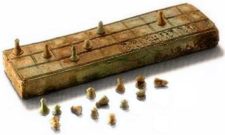 The game Senet, a running board game distantly related to backgammon, is played in Egypt. It is, however, doubted that backgammon
developed directly from Senet, as there were no Senet boards found from the period 1500 BC to 200 AD, so there seems to be a
missing link.
The game Senet, a running board game distantly related to backgammon, is played in Egypt. It is, however, doubted that backgammon
developed directly from Senet, as there were no Senet boards found from the period 1500 BC to 200 AD, so there seems to be a
missing link.
|
|||||||||||||||||||||||||||||||||||||||||||||||||||||||||||||||||||||||||||||
| ca. 3000 BC | 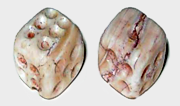 In Shahr-i Sokhta (literally "Burnt City"), a Bronze Age urban settlement in the southeast of today's Iran in the province of Sistan,
a game very similar to backgammon is played. Findings in the "Burt City" in 2004 seem to have unearthed the oldest backgammon board. The board
is rectangular and made of ebony 2) . The game was found together with 60 (!) pieces and cubic dice.
Iranian archaeologists claim, that these findings are at least 200 years older than the game board found in the Royal Tombs of Ur.
In Shahr-i Sokhta (literally "Burnt City"), a Bronze Age urban settlement in the southeast of today's Iran in the province of Sistan,
a game very similar to backgammon is played. Findings in the "Burt City" in 2004 seem to have unearthed the oldest backgammon board. The board
is rectangular and made of ebony 2) . The game was found together with 60 (!) pieces and cubic dice.
Iranian archaeologists claim, that these findings are at least 200 years older than the game board found in the Royal Tombs of Ur.
|
|||||||||||||||||||||||||||||||||||||||||||||||||||||||||||||||||||||||||||||
| ca. 2600 BC | 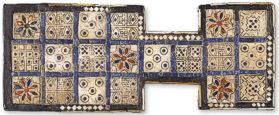 Two game boards found in the Sumerian Royal Tombs of Ur by Sir Leonard Woolley in the 1920s indicate, that around 2600 - 2400 BC a
board game is played that might be an early ancestor of backgammon. The game was later called Royal Game of Ur, as we don't know how it
was named by the people of that time.
Two game boards found in the Sumerian Royal Tombs of Ur by Sir Leonard Woolley in the 1920s indicate, that around 2600 - 2400 BC a
board game is played that might be an early ancestor of backgammon. The game was later called Royal Game of Ur, as we don't know how it
was named by the people of that time.
Later boards were found that have Senet on one side and the Royal Game of Ur on the reverse. So both games were known at the same time at the same places. Very entertaining is the online playable version of the "Royal Game of Ur" at the Britsh Museum. | |||||||||||||||||||||||||||||||||||||||||||||||||||||||||||||||||||||||||||||
| ca. 1500 BC | 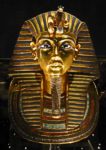 A board game which may be an ancestor of backgammon is played in Egypt. In the tomb of Tutankhamun, Pharaoh of Egypt, which was (re-)discovered
by the British egyptologist Howard Carter 4th November 1922, board games very similar to backgammon dating around 1500 BC were found. The same boards
were also found in Cyprus, which was at that time an Egyptian colony. Paintings in many Egyptian tombs display people playing the game which suggests
that this game was played not only by the aristrocracy, but also by common people.
A board game which may be an ancestor of backgammon is played in Egypt. In the tomb of Tutankhamun, Pharaoh of Egypt, which was (re-)discovered
by the British egyptologist Howard Carter 4th November 1922, board games very similar to backgammon dating around 1500 BC were found. The same boards
were also found in Cyprus, which was at that time an Egyptian colony. Paintings in many Egyptian tombs display people playing the game which suggests
that this game was played not only by the aristrocracy, but also by common people.
|
|||||||||||||||||||||||||||||||||||||||||||||||||||||||||||||||||||||||||||||
| ca. 8 AD |
First mention of the Roman game Ludus Duodecim Scriptorum ("game of twelve lines") in Ovid's 3) "Ars Amorous".
Ludus Duodecim Scriptorum seems to have developed from the game Senet. It has many similarities to backgammon, amongst others a bar, six points on each side of the bar, 15 men for each player. However, it had three rows and was played with three dice. |
|||||||||||||||||||||||||||||||||||||||||||||||||||||||||||||||||||||||||||||
| ~ 54 AD | 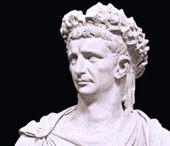 A game called Tabulae is known to have been played in old Rome. Tabulae seems to be a variant of Ludus Duodecim Scriptorum,
which had developed by omitting the middle row. So Tabulae was already much closer to modern backgammon.
A game called Tabulae is known to have been played in old Rome. Tabulae seems to be a variant of Ludus Duodecim Scriptorum,
which had developed by omitting the middle row. So Tabulae was already much closer to modern backgammon.
It is said, that Roman Emperor Claudius discussed Tabulae in a book. However, none of the more than 40 books that Claudius is said to have written survived. Tabulae is also known under the name Alea (Dice). |
|||||||||||||||||||||||||||||||||||||||||||||||||||||||||||||||||||||||||||||
| ca. 125 AD | A board of Ludus Duodecim Scriptorum dated about 125 AD was later found in Holt in Denbighshire (Wales) in a grave of a Roman soldier, indicating the first spreading of the game across Europe. | |||||||||||||||||||||||||||||||||||||||||||||||||||||||||||||||||||||||||||||
| 300 - 500 AD | 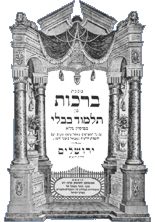 First mention of the game Nardschir in the Babylonian Talmud 4) . Nardschir or Nard
was played on a backgammon board, which already had two lines with 12 fields each. Each player had two dice and 15 pieces, which were arranged
in the same starting configuration as in backgammon. Single pieces could be hit and had to re-enter.
First mention of the game Nardschir in the Babylonian Talmud 4) . Nardschir or Nard
was played on a backgammon board, which already had two lines with 12 fields each. Each player had two dice and 15 pieces, which were arranged
in the same starting configuration as in backgammon. Single pieces could be hit and had to re-enter.
|
|||||||||||||||||||||||||||||||||||||||||||||||||||||||||||||||||||||||||||||
| 476 - 481 AD | An epigram mentions a position of a game of Tabulae played by the Roman Emperor Zeno (478 - 481 AD). | |||||||||||||||||||||||||||||||||||||||||||||||||||||||||||||||||||||||||||||
| 6th century | 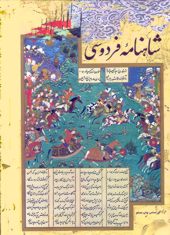 According to the Persian poet Ferdowsi, Burzoe, a wise Iranian physician and politician, invented Nard in the 6th century. So he states in his
book "Shahnameh" ("The Epic of Kings") written about 1000 AD.
According to the Persian poet Ferdowsi, Burzoe, a wise Iranian physician and politician, invented Nard in the 6th century. So he states in his
book "Shahnameh" ("The Epic of Kings") written about 1000 AD.
|
|||||||||||||||||||||||||||||||||||||||||||||||||||||||||||||||||||||||||||||
| 11th - 15th century | 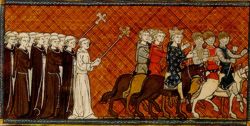 The crusades probably expedite the spreading of Tabulae over whole Europe.
The crusades probably expedite the spreading of Tabulae over whole Europe.
|
|||||||||||||||||||||||||||||||||||||||||||||||||||||||||||||||||||||||||||||
| ~ 1180 | First mention of tables in Germany, where it was first called Wurfzabel, in the will of Count Sibotos of Neuenberg in which he bequeaths four boards of chess and four boards of Wurfzabel. | |||||||||||||||||||||||||||||||||||||||||||||||||||||||||||||||||||||||||||||
| ~ 1190 | 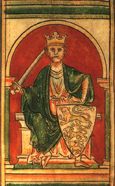 Richard I 5) , king of England, later referred to as Richard the Lionheart, has severe problems with
the passion for gambling of his troops. Therefore it was decreed that no one with a rank lower than knight was allowed to gamble for money.
Richard I 5) , king of England, later referred to as Richard the Lionheart, has severe problems with
the passion for gambling of his troops. Therefore it was decreed that no one with a rank lower than knight was allowed to gamble for money.
|
|||||||||||||||||||||||||||||||||||||||||||||||||||||||||||||||||||||||||||||
| 1254 | King Louis IX of France 6) , known as Saint Louis, forbids his court officials to play jeux de tables and extends this ban over other gambling games as well. | |||||||||||||||||||||||||||||||||||||||||||||||||||||||||||||||||||||||||||||
| 1283 | 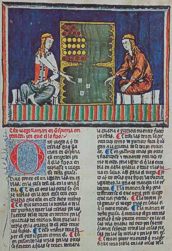 Alfonso X of Castile 7) , a Spanish monarch who rules as the King of Galicia, Castile and León,
completes his book "Libro de los juegos" 8) (Book of Games), which describes on 98 coloured and
illustrated pages games like chess, dice and many variants of the tables family. Todas Tablas, a tables variant, is very similar to
backgammon, having an identical starting position to modern backgammon and following the same rules for movement and bearoff.
Alfonso X of Castile 7) , a Spanish monarch who rules as the King of Galicia, Castile and León,
completes his book "Libro de los juegos" 8) (Book of Games), which describes on 98 coloured and
illustrated pages games like chess, dice and many variants of the tables family. Todas Tablas, a tables variant, is very similar to
backgammon, having an identical starting position to modern backgammon and following the same rules for movement and bearoff.
"Libro de los juegos" is not only one of the most important documents for researching the history of board games, it is also the first known codification of the rules. |
|||||||||||||||||||||||||||||||||||||||||||||||||||||||||||||||||||||||||||||
| 1526 | 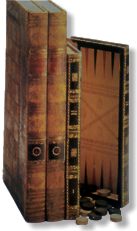 The English Cardinal Wolsey orders all backgammon boards to be burnt. Motivated by this order boards become popular which are
disguised as books. Foldable in the middle, the boards look like books when folded and can be hidden in the bookshelves.
The English Cardinal Wolsey orders all backgammon boards to be burnt. Motivated by this order boards become popular which are
disguised as books. Foldable in the middle, the boards look like books when folded and can be hidden in the bookshelves.
|
|||||||||||||||||||||||||||||||||||||||||||||||||||||||||||||||||||||||||||||
| 1571 | In England the Elizabethan Canons of 1571 forbid playing the games of tables. Those are the last attempts to be found in England against playing the games of tables 9) . | |||||||||||||||||||||||||||||||||||||||||||||||||||||||||||||||||||||||||||||
| 16th century | While the popularity of Tablulae seems to have faded over the last centuries, a new variant of the game called Tric-Trac spreads in Europe. Tric-Trac becomes a popular pastime at the courts of Louis XIV, Louis XV and Louis XVI so that during the French revolution, unfortunately, most Tric-Trac boards were destroyed, being seen as symbols of the monarchy. | |||||||||||||||||||||||||||||||||||||||||||||||||||||||||||||||||||||||||||||
| 1628 | 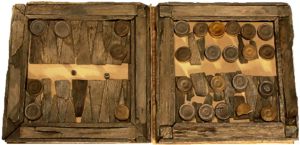 Sinking of the Swedish 64-gun ship of the line Vasa. The ship was recovered in 1961. Amongst the findings was a backgammon board
that had been found in one of the officer's cabins, indicating that backgammon had found its way to Sweden.
Sinking of the Swedish 64-gun ship of the line Vasa. The ship was recovered in 1961. Amongst the findings was a backgammon board
that had been found in one of the officer's cabins, indicating that backgammon had found its way to Sweden.
|
|||||||||||||||||||||||||||||||||||||||||||||||||||||||||||||||||||||||||||||
| 1645 10) |
Earliest recorded use of the word backgammon according the Oxford Universal Dictionary in James
Howell's 11) "Familiar Letters" (Epistolae Ho-Elianae):
Though you have learnt to play at Baggammon, you must not forget Irish 12) , which is a more serious and solid game."
H.J.R. Murray 13) states, that backgammon was invented in England in the early 17th century as a modern form of the game tables. Backgammon differs from tables by doublets now beeing played twice and the introduction of the triple game (backgammon). |
|||||||||||||||||||||||||||||||||||||||||||||||||||||||||||||||||||||||||||||
| 1660s |
Francis Willughby's "Book of Games", which contains the first publication of a handwritten manuscript from England written in the 1660s,
mentions the action "Vie" for the game of Ticktack (a sibling of Trictrac, which is a close relative of backgammon). This "Vie" is very
similar to doubling, with the difference, that the second vie does not quadruple the stakes, but lets the player play for three times
the stake. The third vie will put the stake four times as high, not eight times, as in doubling nowadays.
So it seems that in the backgammon variant Ticktack a sort of doubling already existed more than 300 years ago, but must somehow have been lost, before doubling was re-invented for backgammon in the 1920s. |
|||||||||||||||||||||||||||||||||||||||||||||||||||||||||||||||||||||||||||||
| 1678 |
Probably the first use of the word "backgammon" in English literature by Samuel Butler 14) in
his satirical epic poem on Puritanism entitled Hudibras.
Till finding your old foe, the hangman,
Was like to lurch you at back-gammon And win your necks upon the set, As well as ours, who did but bet, (For he had drawn your ears before, And nick'd them on the self-same score,) We threw the box and dice away, Before y' had lost us, at foul play; |
|||||||||||||||||||||||||||||||||||||||||||||||||||||||||||||||||||||||||||||
| 18th century | Backgammon arrived in America. | |||||||||||||||||||||||||||||||||||||||||||||||||||||||||||||||||||||||||||||
| 1743 | 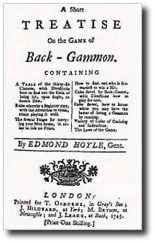 First codification of the the rules of backgammon by Edmond Hoyle in A Short Treatise on the Game of Back-Gammon.
First codification of the the rules of backgammon by Edmond Hoyle in A Short Treatise on the Game of Back-Gammon.
|
|||||||||||||||||||||||||||||||||||||||||||||||||||||||||||||||||||||||||||||
| ~ 1770 | 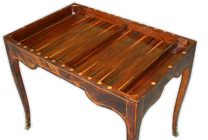 During the reign of Louis XVI, King of France and Navarre specially designed Tric-Trac tables become very popular in France. The tables have
a cover, so that it can be used as normal table. The cover often has a chess-board at its opposite surface. And removing the cover reveals
a Tric-Trac board.
During the reign of Louis XVI, King of France and Navarre specially designed Tric-Trac tables become very popular in France. The tables have
a cover, so that it can be used as normal table. The cover often has a chess-board at its opposite surface. And removing the cover reveals
a Tric-Trac board.
|
|||||||||||||||||||||||||||||||||||||||||||||||||||||||||||||||||||||||||||||
| 1776 |
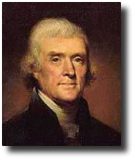 It is known that during the days drafting the United States Declaration of Independence, Thomas Jefferson regularly relaxed playing backgammon. In his
notebook he documented the gains and losses of his playing sessions.
It is known that during the days drafting the United States Declaration of Independence, Thomas Jefferson regularly relaxed playing backgammon. In his
notebook he documented the gains and losses of his playing sessions.
|
|||||||||||||||||||||||||||||||||||||||||||||||||||||||||||||||||||||||||||||
| 1842 - 1882 | 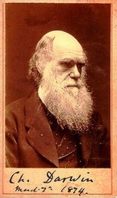 Probably the most famous backgammon player: Charles Darwin. He used to play backgammon daily with his wife or children at the family's residence
Down House, Kent.
Probably the most famous backgammon player: Charles Darwin. He used to play backgammon daily with his wife or children at the family's residence
Down House, Kent.
His son writes 15) : "After dinner he played backgammon with my mother, two games being played every night; for many years a score of the games which each won was kept, and in this score he took the greatest interest. He became extremely animated over these games, bitterly lamenting his bad luck and exploding with exaggerated mock-anger at my mother's good fortune." |
|||||||||||||||||||||||||||||||||||||||||||||||||||||||||||||||||||||||||||||
| 1920s |  The "doubling cube" was invented (or re-invented, see above → 1660s), probably in one of the game clubs in
New York 16) . Unfortunately it is not known which genius invented the cube.
The "doubling cube" was invented (or re-invented, see above → 1660s), probably in one of the game clubs in
New York 16) . Unfortunately it is not known which genius invented the cube.
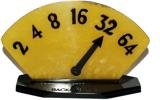 There were (temporary) attempts to keep track of the status of doubling by other devices, like the one shown on the
left 17) .
There were (temporary) attempts to keep track of the status of doubling by other devices, like the one shown on the
left 17) .
|
|||||||||||||||||||||||||||||||||||||||||||||||||||||||||||||||||||||||||||||
| 1931 |
Having identified the need for harmonized backgammon rules, the New York's Racquet and Tennis Club invites other clubs from all over America
to join them in order to formulate the laws of backgammon. In a meeting on February 21, 1931, at which a number of clubs were represented,
the laws of backgammon were agreed upon. The Racquet and Tennis Club was authorized to reserve a copyright to such laws.
The Laws are effective as of April 17th, 1931.
Those rules were published in the booklet Laws of Backgammon. |
|||||||||||||||||||||||||||||||||||||||||||||||||||||||||||||||||||||||||||||
| 1964 |
Prince Alexis Obolensky organizes an international backgammon tournament in the Bahamas, probably the first international backgammon tournament.
That is the hour of birth of modern backgammon tournaments.
For the records: 32 players participated. Winner was Charles Wacker from the USA. |
|||||||||||||||||||||||||||||||||||||||||||||||||||||||||||||||||||||||||||||
| 1967 | The first World Championships of Backgammon are held in Las Vegas, USA. Tim Holland becomes the first World Champion of Backgammon and also wins the World Championships in 1968 and 1971. | |||||||||||||||||||||||||||||||||||||||||||||||||||||||||||||||||||||||||||||
| 1970 | 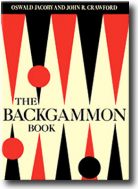 John Crawford and Oswald Jacoby, two pioneers of modern backgammon, publish The Backgammon Book.
It's a classic book of backgammon. The authors were the first to try to approach backgammon in an analytical way. Also the book contains subjects
you won't find in any of today's books, like the history of backgammon, etiquette, how to organize a tournament, etc.
John Crawford and Oswald Jacoby, two pioneers of modern backgammon, publish The Backgammon Book.
It's a classic book of backgammon. The authors were the first to try to approach backgammon in an analytical way. Also the book contains subjects
you won't find in any of today's books, like the history of backgammon, etiquette, how to organize a tournament, etc.
Still worth reading today, even if it can't improve your strength of play any more. |
|||||||||||||||||||||||||||||||||||||||||||||||||||||||||||||||||||||||||||||
| 1973 | Carol Crawford, wife of the well-known John Crawford, is the first woman ever to become World Champion of Backgammon. | |||||||||||||||||||||||||||||||||||||||||||||||||||||||||||||||||||||||||||||
| 1973 |  Cardinal Industries, one of the leading games manufacturers of the USA, sells in this one year as many backgammon boards as in the
20 years before all together - an indicator for the backgammon craze of that time. Another indicator for the development of the
popularity of backgammon is the amount of books published over the years.
Cardinal Industries, one of the leading games manufacturers of the USA, sells in this one year as many backgammon boards as in the
20 years before all together - an indicator for the backgammon craze of that time. Another indicator for the development of the
popularity of backgammon is the amount of books published over the years.
|
|||||||||||||||||||||||||||||||||||||||||||||||||||||||||||||||||||||||||||||
| 1976 | 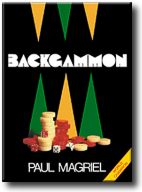 Paul Magriel publishes his book Backgammon, a masterpiece of backgammon literature and rightly often called
"the bible of backgammon". Still today it is a must read!
Paul Magriel publishes his book Backgammon, a masterpiece of backgammon literature and rightly often called
"the bible of backgammon". Still today it is a must read!
|
|||||||||||||||||||||||||||||||||||||||||||||||||||||||||||||||||||||||||||||
| ca. 1977 |
Nack Ballard invents the modern backgammon variant Nackgammon. It is played with the same rules as backgammon. Only the starting position
differs (see diagram). Nackgammon will lead to longer, more complex games and therefore reduces the luck factor in favour of the skill factor
in backgammon.
|
|||||||||||||||||||||||||||||||||||||||||||||||||||||||||||||||||||||||||||||
| 1979 |
One day after winning the Backgammon World Championship, Luigi Villa (ITA) accepts the challenge to play against
BKG 9.8, a backgammon programme developed by Hans Berliner. Although Villa plays much better than the programme he
gets defeated 1:7. This is the first time a backgammon world champion gets defeated in an official match by
computer software.
The match file of that duel can be downloaded from my match archive. |
|||||||||||||||||||||||||||||||||||||||||||||||||||||||||||||||||||||||||||||
| 19 Feb 1982 | In the case Oregon vs. Tedd Barr 18) judge Stephen Walker ruled that "Backgammon is not a game of chance but a game of skill." During the four-day trial o.a. Paul Magriel acted as witness and seemes to have convinced the judge about the importance of the skill factor in backgammon. | |||||||||||||||||||||||||||||||||||||||||||||||||||||||||||||||||||||||||||||
| 1984 |
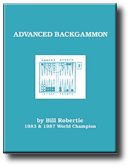 Bill Robertie publishes his book Advanced Backgammon, which was at its time a milestone of
backgammon literature. A revised edition was later published 1991 in two volumes.
Bill Robertie publishes his book Advanced Backgammon, which was at its time a milestone of
backgammon literature. A revised edition was later published 1991 in two volumes.
|
|||||||||||||||||||||||||||||||||||||||||||||||||||||||||||||||||||||||||||||
| 1989 | 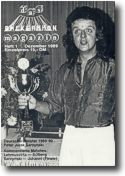 German top backgammon player Harald Johanni starts publishing the three-monthly magazine "Das Backgammon Magazin", initially only written in German, but
later bi-lingual German-English. A great source of backgammon knowledge.
German top backgammon player Harald Johanni starts publishing the three-monthly magazine "Das Backgammon Magazin", initially only written in German, but
later bi-lingual German-English. A great source of backgammon knowledge.
|
|||||||||||||||||||||||||||||||||||||||||||||||||||||||||||||||||||||||||||||
| 1991 | 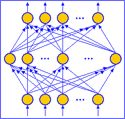 Dr. Gerald Tesauro develops the first backgammon software which is based upon the technology of neural networks: TD-Gammon. In the same year double
World Champion Bill Robertie plays a series of 31 games against TD-Gammon and is impressed by its strength 18) .
Dr. Gerald Tesauro develops the first backgammon software which is based upon the technology of neural networks: TD-Gammon. In the same year double
World Champion Bill Robertie plays a series of 31 games against TD-Gammon and is impressed by its strength 18) .
|
|||||||||||||||||||||||||||||||||||||||||||||||||||||||||||||||||||||||||||||
| 1991 | 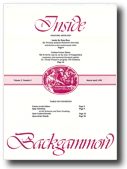 Bill Robertie and Kent Goulding start publishing the magnificent backgammon magazine "Inside Backgammon". It's published 6 times a year, later four times
a year 19) .
Bill Robertie and Kent Goulding start publishing the magnificent backgammon magazine "Inside Backgammon". It's published 6 times a year, later four times
a year 19) .
|
|||||||||||||||||||||||||||||||||||||||||||||||||||||||||||||||||||||||||||||
| 19th Jul 1992 | ||||||||||||||||||||||||||||||||||||||||||||||||||||||||||||||||||||||||||||||
| 1994 |  With JellyFish™ the first neural network based backgammon software becomes
commercially available. At this time
JellyFish™ is significantly stronger than any other backgammon software. The availability of such strong software has
a deep impact on the understanding of the game.
With JellyFish™ the first neural network based backgammon software becomes
commercially available. At this time
JellyFish™ is significantly stronger than any other backgammon software. The availability of such strong software has
a deep impact on the understanding of the game.
|
|||||||||||||||||||||||||||||||||||||||||||||||||||||||||||||||||||||||||||||
| 1994 | 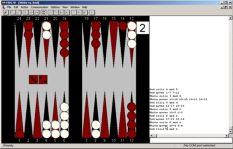 The first graphical interfaces for FIBS are available, making playing on FIBS much more comfortable: FIBS/W and MacFIBS. Since this time many
more graphical user interfaces for FIBS have been developed.
The first graphical interfaces for FIBS are available, making playing on FIBS much more comfortable: FIBS/W and MacFIBS. Since this time many
more graphical user interfaces for FIBS have been developed.
|
|||||||||||||||||||||||||||||||||||||||||||||||||||||||||||||||||||||||||||||
| 1998 | 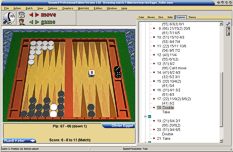 Snowie™, developed by the Swiss Olivier Egger,
replaces JellyFish™ as strongest backgammon software. Today Snowie™ is
available in version 4 and is still, together with GNU Backgammon, the leading backgammon software.
Snowie™, developed by the Swiss Olivier Egger,
replaces JellyFish™ as strongest backgammon software. Today Snowie™ is
available in version 4 and is still, together with GNU Backgammon, the leading backgammon software.
|
|||||||||||||||||||||||||||||||||||||||||||||||||||||||||||||||||||||||||||||
| End of 1998 |
After eight years with 44 issues Bill Robertie and Kent Goulding stop publishing their magazine "Inside
Backgammon" |
|||||||||||||||||||||||||||||||||||||||||||||||||||||||||||||||||||||||||||||
| July 1999 | ||||||||||||||||||||||||||||||||||||||||||||||||||||||||||||||||||||||||||||||
| End of 1999 |
|
|||||||||||||||||||||||||||||||||||||||||||||||||||||||||||||||||||||||||||||
|
|